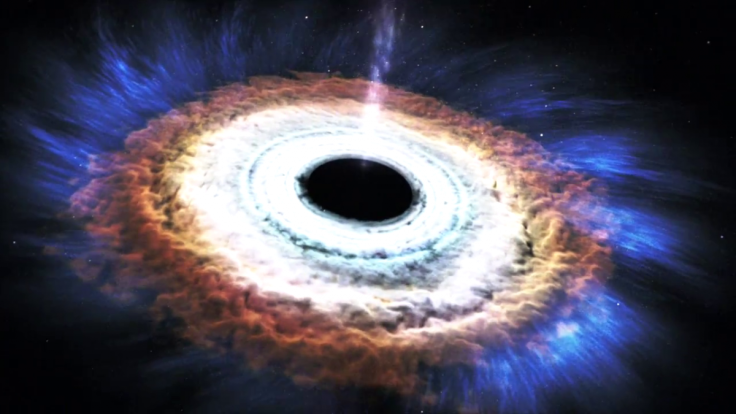Supermassive black hole gobbles up star then burps out high-speed flare from event horizon

A black hole has been observed eating a whole star then burping out a flare of matter at almost the speed of light. The team of astrophysicists led by Johns Hopkins University say this is the first time this "extremely rare" event has been witnessed and shows a prediction black holes ingesting stars is correct.
The team observed the star, which was about the same size as our sun, as it moved from its normal path and slipped into the gravitational pull of the black hole. It then got sucked in and swallowed whole before emitting a jet of plasma. Findings were published in the journal Science.
Sjoert van Velzen, a Hubble fellow at Johns Hopkins, said: "These events are extremely rare. It's the first time we see everything from the stellar destruction followed by the launch of a conical outflow, also called a jet, and we watched it unfold over several months."
"The destruction of a star by a black hole is beautifully complicated, and far from understood."
The galaxy where the black hole was is around 300 million light years from Earth (one light year is around 5.88 trillion miles). Black holes are areas of space so dense, nothing can escape their gravitational pull, including gas, matter and light. Previously, scientists had predicted that when black holes consume stars, a fast-moving jet of plasma can escape from the event horizon, or the black hole's edge.
Scientists first noticed the star being swallowed by the black hole in 2014 and following the announcement, Velzen got to work trying to observe what happened with radio telescopes. After months of observations, they were able to produce a portrait of the event.
After ruling out the light was from another source, they were able to conclude the sudden increase of light from the galaxy was the trapped star and the thermal flare. The findings, they say, could indicate these jets are common occurrences when stars get sucked into black holes – but their detection remained elusive because instruments used were not sensitive enough.
"The destruction of a star by a black hole is beautifully complicated, and far from understood," Velzen said. "From our observations, we learn the streams of stellar debris can organise and make a jet rather quickly, which is valuable input for constructing a complete theory of these events."
© Copyright IBTimes 2025. All rights reserved.






















